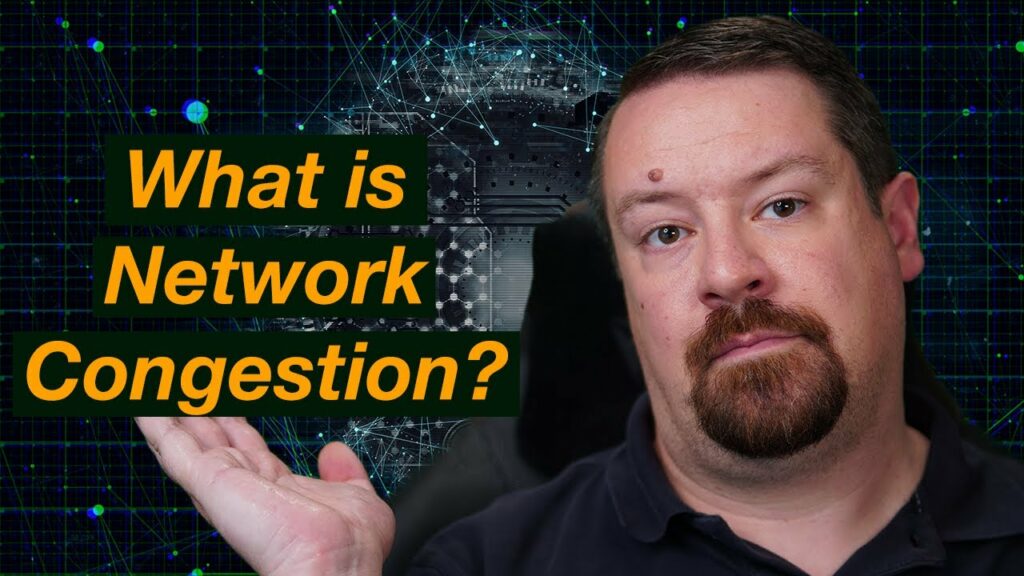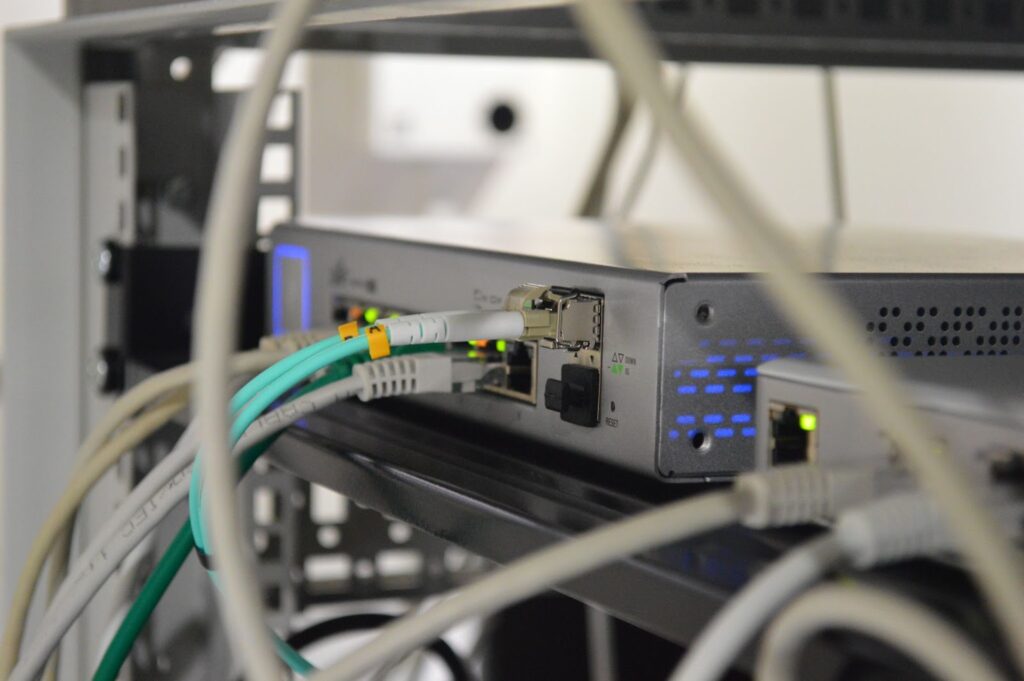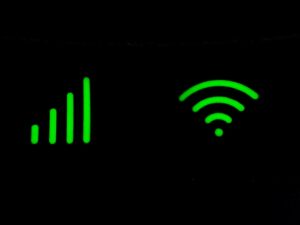WiFi is a convenient way to connect to the internet. It is available in many public places, such as airports, coffee shops, and schools. You can also use WiFi to connect your devices at home.
However, if you have more than one device on your WiFi network, you may have noticed that it’s not always as fast as you’d like. You may even be getting disconnected from the network altogether. This issue is caused by a phenomenon called “network congestion.”
In this article, we’ll explore what network congestion is and how to fix it using some simple tips. Let’s go!
How Does WiFi Work?
WiFi networks use radio waves to connect your devices to the internet. These waves are transmitted by a router, which is a device that connects to the modem and provides WiFi access to your devices.
No products found.
When connected to a WiFi network, your device will automatically scan for available networks and display them in a list. You can then select the network that you want to connect to and enter the password, if applicable.
What is Network Congestion?
When there is too much data on the network, it creates congestion and a slowdown in the WiFi speeds for each device.
The WiFi signal is shared by all of the devices that are connected to the network, so when there is a lot of traffic, the signal becomes weaker and slower for every individual device. This can cause problems with downloading content or sending emails.
How Do I Fix Network Congestion?

Youtube: https://www.youtube.com/watch?v=CeaN0o4yRA8
If you’re having trouble connecting to a WiFi network because there are too many devices connected, there are a few things that you can do to troubleshoot and fix the issue:
Disconnect Some of Your Devices from the Network
Disconnecting some of your devices from the network is the easiest way to improve the speed of your WiFi connection. If you have several devices that are not in use, or if you’re only using one device, disconnect them from the network.
Move Some of Your Devices Closer to the Router
If you’re living in a house that has multiple floors, move some of your WiFi-enabled devices (like smartphones or laptops) up to one floor closer to the router and see if it speeds up your internet connection.
Upgrade your Router
Suppose you’re having trouble connecting to a WiFi network because there are too many devices connected. In that case, you may want to consider upgrading your router to a model that supports more devices.
Some routers have the ability to support more devices than others, so it’s important to choose a model that can handle the number of devices connected to your network.
Primary Types of WiFi Routers
There are three types of WiFi routers: single-band, dual-band, and tri-band. The type of router you have will affect the speed of your WiFi connection.
IEEE 802.11 is the standard that defines WiFi:
- Single-band WiFi routers use the 2.4 GHz frequency to send and receive data.
- Dual-band WiFi routers use the 2.4 GHz and 5 GHz frequencies to send and receive data.
- Tri-band WiFi routers use the 2.4 GHz, 5 GHz, and 60 GHz frequencies to send and receive data.
The type of WiFi router you have will affect the speed of your WiFi connection.
- Single-Band WiFi Router
If you have a single-band WiFi router, you may experience a slowdown in WiFi speed if you have more than one device connected to the network. This is because your router has a total amount of bandwidth it can use, and every device that connects to the network also uses up some of this bandwidth.
- Dual-Band WiFi Router
If you have a dual-band WiFi router, you’ll still encounter slowdown with multiple devices, but the impact will be less than with a single-band router.
This is because the dual-band router has two radios, one for each frequency. This allows the device to send and receive data on two different frequencies at the same time.
- Tri-band WiFi Router
Tri-band WiFi routers have three radios, which gives them even more bandwidth to use. This means WiFi speed will not slow down as much because each device can use a different frequency.
If you’re not sure which type of router is best for you, contact your provider, and they will be able to help you find the right type of router for your needs.
Tips for Managing Your Home’s WiFi Usage

Here are some tips for managing your home’s WiFi usage:
1. Identify the devices that are using the most bandwidth:
You can do this by going to your router’s admin panel and looking at the amount of bandwidth each device is using.
You can also look at your ISP’s website to find out which devices are connected to a certain IP address (you will need this information to access it online). By looking at the number of devices per IP address, you can identify which devices are using the most bandwidth.
2. When possible, limit the number of devices connected to your router at one time. This will increase bandwidth and decrease latency.
3. Using a WiFi extender can help you create a stronger wireless signal in areas of your home that may have weak coverage.
4. If you live in a neighborhood with many WiFi networks, consider changing the name of your network to something unique. This will help avoid interference from other networks and allow for better security.
5. Use parental controls to block certain websites or content on your network.
6. Use encryption when possible, as it will help protect your network from unwanted access by others.
7. Make sure that each device on your network is updated with the most current firmware updates (available through the manufacturer’s website).
By following these tips, you can help manage your home’s WiFi usage and improve your overall wireless internet experience.
Common Problems With WiFi Networks and Solutions
WiFi networks are one of the most common ways to access the internet. However, below are some common problems that can occur with these networks, along with solutions to fix them.
WiFi Signal is Not Strong Enough
This can be fixed by placing your router in the right place. If you have a weak signal, try moving your router closer to your device or purchasing a WiFi extender.
Slow Connection Speed
If your internet service provider provides you with a slow connection speed, you can get it fixed by contacting them or asking for a faster internet plan.
Although WiFi networks are convenient, they do take some work to maintain.
Why You Should Consider A Mesh Network Setup for Your Home or Office

A mesh network is a WiFi network that uses multiple WiFi routers to create a single network.
Mesh networks are helpful because they create a network that is more stable and faster because WiFi signals are sent to each router as well as back outwards from it.
The mesh system creates a private internet connection for all devices connected to the WiFi network.
How A Mesh Network Works
Each of the different device-connected routers on a mesh network has its own WiFi signal. The mesh network uses these signals to create a single network for all devices connected to the mesh system.
Additionally, the mesh WiFi network can extend your signal further than a traditional router alone.
When to Consider A Mesh Network
If you have a large home or office with multiple stories, a lot of WiFi-connected devices, or an inconsistent WiFi signal, then you should consider using a mesh WiFi network.
How to Set Up A Mesh Network

Youtube: https://www.youtube.com/watch?v=CeJJ0DyiywQ
Setting up a mesh WiFi network is easy!
You can either purchase a premade mesh WiFi system or set up your own using multiple routers. If you choose to set up your own mesh network, be sure to select WiFi routers that are compatible with one another.
Conclusion
It can be frustrating when your WiFi connection is slow, and it may seem like there’s nothing you can do about it.
However, by following the tips in this article, you should be able to speed up your connection once again.
Hopefully, this article has helped you resolve any issues you were experiencing. If you still have trouble, it may be time to upgrade your router or internet plan.



